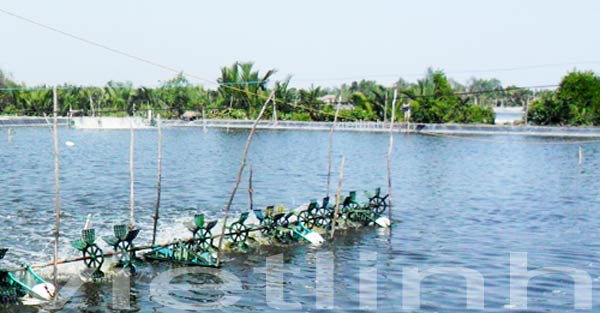- Origin: Choose to buy shrimp beeds from places with traceable origins; broodstock shrimp must have an assured quality in accordance with the regulations; Post-larvae shrimp should have negative test results for pathogens such as MBV, white spots, yellow head, Taura, IMNV, Pancreatic Diseases acute liver necrosis AHPNS / AHPND, etc.
- Shrimp size: the minimum length of Post-larvae prawn (P15) is 12mm; of whiteleg shrimp Post-larvae (P12) is 9-11mm. Evaluation of the size, color, brightness, clear pigment, closed antennae, abdominal segment slender and long, good shell with head and body balance without parasites clinging. Healthy shrimp swim well, upstream, stick well in tanks and have good reflection with sounds created into the tanks. Full intestine and without glowing are also criteria for choosing Post-larvae shrimp.
Check the health of breeds by shocking them with formalin before release: Releasing 100-200 post-larvae shrimps into a cup or bowl containing formaldehyde solution with a concentration of 100 ppm and observing for 30 minutes. If the survival rate is larger than 95%, the shrimps are qualified.
- Stocking density: Black tiger prawn: 15-25 prawns/m2; whiteleg shrimp: 60-80 shrimps/m2.
- Stocking procedure:
+ Release shrimp in the early morning or in the afternoon. Balance the temperature between how water in ponds and breed bags by soaking the bags in ponds until the temperature of both environment is equal. Then, slowly put the pond water into the bag; hold the bottom of the bag to create a slope for shrimp breeds to follow the water flow into the pond.
+ Before stocking, paddlewheel aerators should be run from 8-12 hours to ensure the amount of dissolved oxygen in ponds greater than 4 mg/l.
- Stocking locations: It is best to release shrimp breeds equally in all positions of the ponds.
Note: Black tiger prawn can be stocked in 1 pond with a density of 40-50 prawns/m2 and farmed during 1 to 1.5 months before being divided for farming into different ponds. This approach helps improve shrimp care and management of the survival rates while saving production and labor costs.
Source: Temporary process for safe brackish-water shrimp farming in areas affected by diseases in Vietnam. According to The Official Dispatch No. 10/TCTS-NTTS. January 6th, 2015. Vietnamese Directorate of Fisheries.
Viet Linh 2015. Translated by Sonia Linh V.
